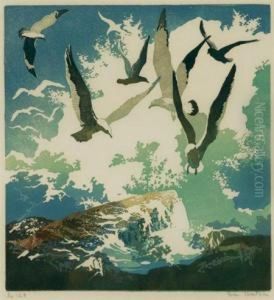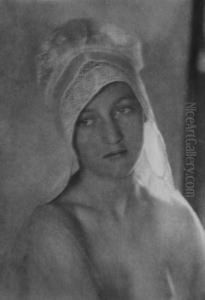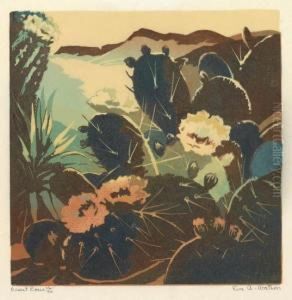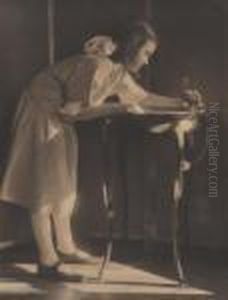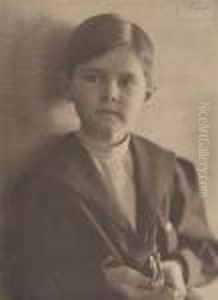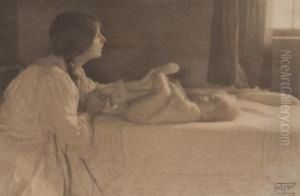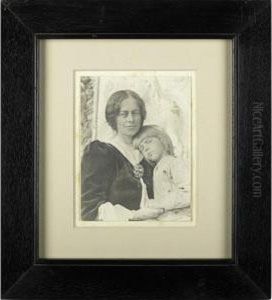Eva Watson-Schutze Paintings
Eva Watson-Schütze was an American photographer born in Jersey City, New Jersey, in 1867. She was an influential figure during the Photo-Secession movement, which was a pivotal period in the development of photography as a fine art at the turn of the 20th century.
Watson-Schütze initially studied painting at the Pennsylvania Academy of the Fine Arts in Philadelphia. However, she shifted her focus to photography, attracted by the medium's potential for artistic expression. She quickly mastered the craft and became known for her pictorial style, characterized by soft focus and often featuring allegorical or mythological themes.
In 1897, Watson-Schütze opened her own photography studio in Philadelphia. Her work caught the attention of Alfred Stieglitz, an eminent photographer and art promoter, who was an advocate for the recognition of photography as an art form equal to traditional mediums like painting and sculpture. Stieglitz included her work in the first issue of Camera Work, a journal dedicated to photography that played a significant role in the Photo-Secession movement.
As a woman in a predominantly male-oriented field, Watson-Schütze was a trailblazer. She participated in numerous exhibitions and was involved with the founding of the Photo-Secession in 1902, alongside Stieglitz and other photographers such as Edward Steichen and Gertrude Käsebier. The group aimed to break away from the constraints of conventional photography and promoted pictorialism, emphasizing the photographer's artistic vision.
Throughout her career, Eva Watson-Schütze explored various subjects, from portraiture to landscapes and botanical studies. Her work is noted for its ethereal quality and often incorporates elements of symbolism. In the later years of her life, Watson-Schütze moved to Chicago with her husband, the German-born architect Martin Schütze, and she became less active in the photography community. Despite this, her contributions to the development of artistic photography remained significant.
Eva Watson-Schütze passed away in 1935, leaving behind a legacy as one of the pioneering female photographers of her time. Her photographs are included in the collections of major institutions, such as the Art Institute of Chicago and the Metropolitan Museum of Art, and continue to be studied and admired for their artistic merit and historical importance within the early 20th-century art movements.
